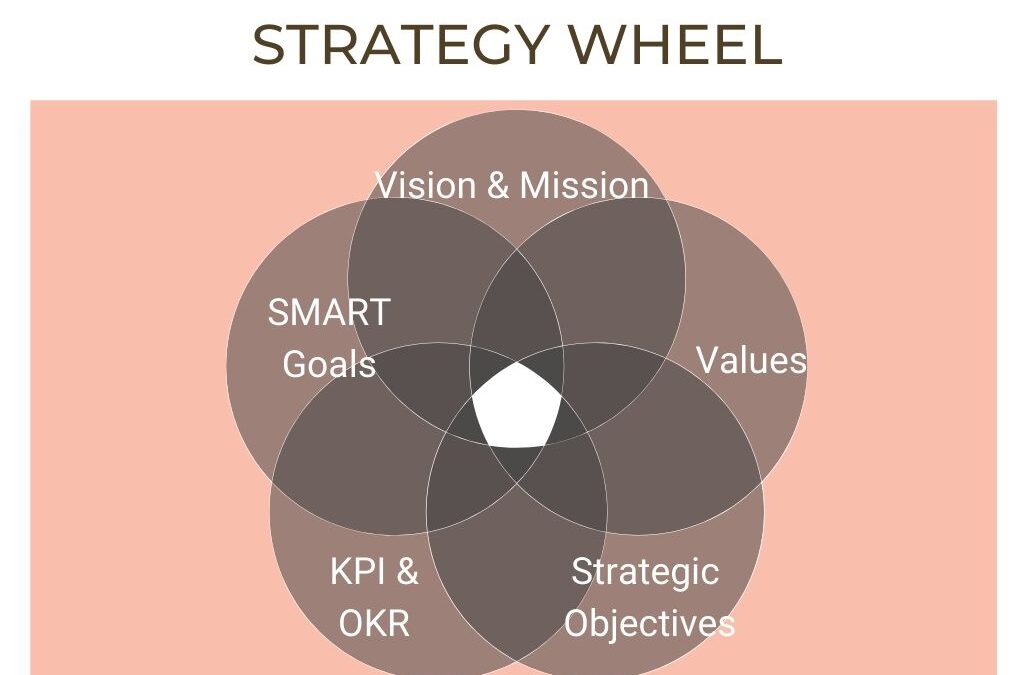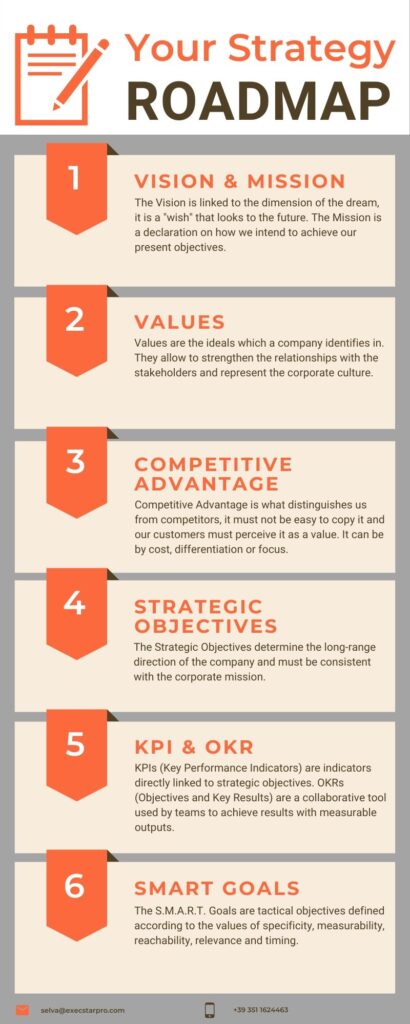As an entrepreneur, you have heard a lot of talk about strategy: What is your corporate strategy? Have you defined your strategic goals? As a founder, you need to develop your marketing and channels strategy and so on. Define your corporate strategy roadmap.
But what really strategy is? There’s not a unique definition, but by my experience, I know what it’s not. The strategy is NOT a cold exercise CEO and managers do in long meetings, only to end up on the back burner. It’s NOT even vision, mission, and values published on the website. The strategy is NOT the one depicted in the institutional presentation.
The Cambridge Dictionary has 3 entries:
- a detailed plan for achieving success in situations such as war, politics, business, industry, or sport, or the skill of planning for such situations
- a long-range plan for achieving something or reaching a goal, or the skill of making such plans
- the way in which a business, government, or other organization carefully plans its actions over a period of time to improve its position and achieve what it wants
Keywords here are: “a detailed plan for achieving success”, “a long-range plan”, “reaching a goal”, “improve its position”.
Every company has its own strategy, even those that don’t know they have it.
A strategy is corporate culture. Goals that every entrepreneur or professional has in mind, even if he has not gotten them with some analysis model. A strategy is to have good customers and to end the fiscal year positively.
Business strategy is often designed as a pyramid, with the vision at the top and the tactics at the bottom. In my opinion, it’s risky because it outlines the disconnect between the various levels of the organization chart: the upper part reserved for CEOs and top managers, the base for the workforce. We assess top management for strategic KPIs (EBIDTA, EBIT, ROE, Gross / Net Profit Margin, EVA, etc) while the rest of the company for operational KPIs (CPC, CPA, CLV, CAC, Overtime, Employee Turnover Rate (ETR ), Lead-to-Opportunity ratio, Delivery Time, Total Tickets vs Open Tickets, etc).
Can you see where the problem is? Operational KPIs are not directly translatable into strategic KPIs. A human effort of interpretation is needed, otherwise, you are in a state of inconsistency if not even internal competition.
In today’s liquid work, roles and tasks are no longer uniquely linked. The real gold is the customer and who has the customer’s pulse if not the operational part of the business? Who knows where the real problems of quality, production, and communication better than those who face the difficulties every working day? Certainly not many CEOs and top managers who have never spoken to their employees or set foot in their factories.



Trackbacks/Pingbacks